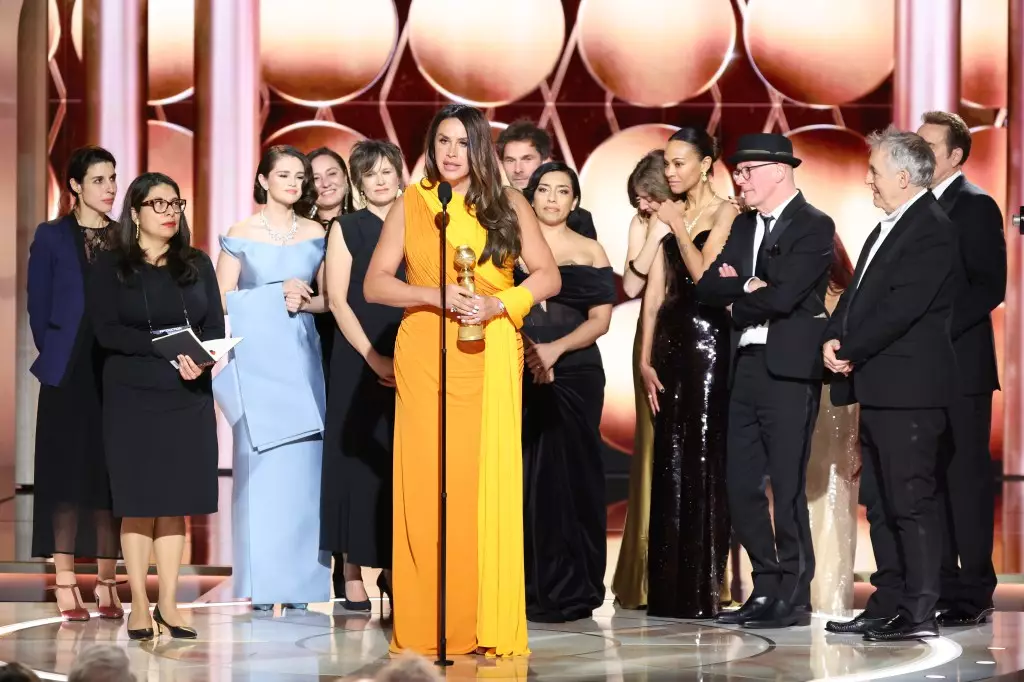The Golden Globe Awards have long been a significant event in the entertainment calendar, drawing attention from film and television enthusiasts alike. However, recent years of controversy and changing viewing habits have prompted shifts in the way these awards are perceived and consumed. The 82nd Annual Golden Globe Awards, held on a recent Sunday night, faced both challenges and triumphs, reflecting broader trends in media consumption and audience engagement.
The latest Golden Globes averaged approximately 10.1 million viewers, according to preliminary data from VideoAmp, a notable increase from 9.4 million viewers from the previous year. However, this figure comes with caveats, as a direct comparison to the previous year’s viewership is complicated by a lack of consistent reporting methods. CBS, the broadcasting partner, has opted to report only VideoAmp metrics due to ongoing issues with Nielsen, raising questions about the reliability of these figures.
One cannot ignore the historical context here; the Globes suffered a significant dip two years ago, posting an all-time low of just 6.3 million viewers as they returned to airwaves following allegations against the HFPA (Hollywood Foreign Press Association). The awards have taken strides since then, particularly after moving back to their traditional Sunday slot, which benefits from a strong lead-in from NFL games. This year’s lead-in was indeed less compelling, as the Kansas City Chiefs faced off against the Denver Broncos in a game that saw many of its stars resting, resulting in a less thrilling matchup than in years past.
Amid the fluctuating numbers, one key trend emerged: the live-streaming audience for the Globes saw a 9% increase from the previous year on platforms such as Paramount+ and the CBS App. This uptick aligns with broader societal trends as audiences increasingly migrate from traditional TV viewing to digital streaming platforms. As established platforms compete with emerging services, events like the Golden Globes are adapting their strategies to engage with a new generation of viewers consumed with on-demand content.
Adding to the complexity is the competition with other high-stakes programming, notably NBC’s Sunday Night Football match-up between the Minnesota Vikings and the Detroit Lions, which attracted a jaw-dropping 28.5 million viewers—the highest for a regular season finale in over a decade. The Golden Globes must navigate not just their historical reputation but also the current entertainment landscape, where even award shows vie for viewers’ attention against major sporting events.
Despite the challenges in live viewership, the Golden Globes found a silver lining in social media engagement. The event topped the charts as the most socially interactive broadcast special of the past year, generating an impressive 40 million social interactions on the night of the awards and achieving a remarkable 124% increase year-over-year in social media engagement. This shift demonstrates the evolving nature of viewer engagement, where audience conversations transcend traditional viewing numbers and become a topic of trending discussions online.
With 45.1 billion potential impressions, the Globes’ social media footprint is substantial, indicating that people are keen to engage with the content, even if they aren’t all tuning in via traditional television. In an era where conversation often occurs digitally, this aspect of viewership is crucial for the awards’ relevance moving forward.
The 2024 Golden Globes introduced significant changes, reflecting the reformations within the organization following the disbanding of the HFPA. New winners, such as Fernanda Torres and Demi Moore, signaled a fresh start, contributing to a sense of renewed interest and engagement from audiences. As the Globes navigate these changes, they are tasked with rebuilding trust and excitement around the ceremony itself.
The continual evolution of viewership metrics, stemming from a landscape being reshaped by streaming services and social media engagement, outlines the future trajectory not just for the Golden Globes but for awards shows in general. As events strive to reclaim their pre-pandemic audiences, they must also innovate and adapt to retain relevance in an ever-changing entertainment ecosystem. Continued adaptation will be critical as the Golden Globes strive to capture the attention of both traditional viewers and digital audiences alike, ensuring their place in the cultural zeitgeist.

